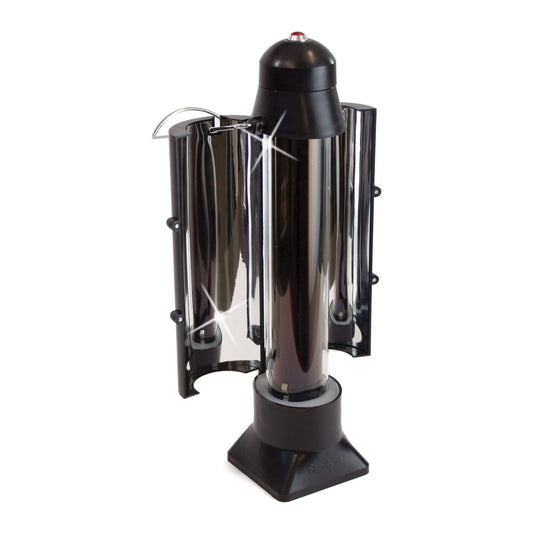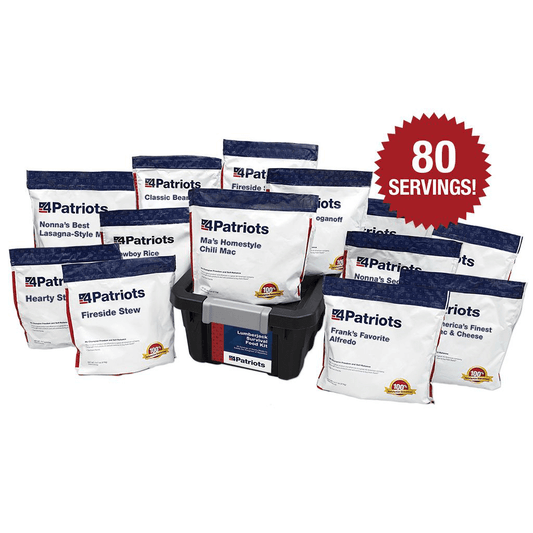
Contaminated Water Issue on Military Bases Worse Than We Thought

For some time now, we've known that drinking water at some U.S. military bases is contaminated. As well as in surrounding areas.
The culprit is toxic fluorinated chemicals (PFAS). These compounds are linked to cancers and liver damage. Plus developmental delays for fetuses and infants.
The chemicals are sometimes called "forever chemicals." Because they don't break down and are impossible to destroy.
Levels have exceeded standards set or proposed by a number of states. That's according to an analysis of Department of Defense (DoD) data. It was done by the Environmental Working Group (EWG).
Over 600 Military Sites Affected
So what's new with this story? The problem is worse than we thought.
A recent Pentagon report reveals this. More than 600 military sites and surrounding communities may have drinking water contaminated by PFAS.
That's more than a 50 percent increase over previous estimates.
One of the most contaminated sites is Fort Bragg in North Carolina. Others include West Point Military Academy in New York. Plus the Yuma Proving Ground in Arizona.
What Level Is Dangerous?
To be fair, there is disagreement over what constitutes "dangerous." The Environmental Protection Agency says 70 parts per trillion of PFAS is acceptable.
The Pentagon says, "No one – on or off base – is drinking water above EPA's level of 70 parts per trillion where DoD is the known source of PFOS and PFOA."
But some states including New Hampshire and New York have set or proposed much lower levels.
As has the EWG. They are working with the PFAS Project Lab. It's located at Northeastern University's Social Science Environmental Health Research Institute.
Fire-Fighting Foam Is to Blame
Why are these contaminations occurring on military bases? Because that's where they use a toxic fire-fighting foam. It's used to put out aircraft fires. As well as in training exercises.
And this foam has been used for decades. Tests have shown contamination of groundwater around hundreds of these bases.
The foam has also leaked out of storage tanks. As a result, thousands of gallons of the foam have soaked into the ground.
The foam has also washed into creeks and wetlands. It has killed fish. And endangered those using waterways for swimming, boating and fishing.
Problem Is 'Deeply Troubling'
Scott Faber is senior vice president for government affairs at EWG. He said, "It is deeply troubling that service members and their families are drinking water that may have unsafe levels of PFAS."
EWG discovered that many of the highest PFAS concentrations are on or near military installations. Others are found on industrial sites. They manufacture or use the compounds in products. Such as non-stick cookware and stain repellent.
The Defense Department has known since the 1970s that fire-fighting foam is toxic to fish. A DoD memo from 2001 called the foam "persistent, bioaccumulating and toxic."
"Congress should do much more to accelerate the cleanup of legacy PFAS contamination," Faber said.
Congress Acting... But Is It Enough?
Congress is acting to restrict PFAS use by military services. Including provisions in the fiscal 2020 National Defense Authorization Act.
The new law also requires testing the blood of military firefighters. To learn about PFAS exposure.
Some members of Congress believe these provisions don't go far enough. Representative Dan Kildee of Michigan and some of his colleagues are among them.
They've asked the House Armed Services Committee to add measures in the fiscal 2021 defense bill.
Trying to Phase Out PFAS
The proposals include testing all military personnel who may have been exposed. And their dependents.
And increasing protection for military firefighters. Including providing PFAS-free safety gear.
Plus creating a registry to notify service members and their families about exposure. As well as phasing out non-essential PFAS used by the DoD.
Kildee said, "These forever chemicals are really dangerous. They have all sorts of health implications... We ought to act as a nation to protect people from them."
Water Contaminations Are Everywhere
It seems these days we see reports of contaminated water almost everywhere. From contaminants like firefighting foam in our military bases, to lead, fluoride or even polio in the tap water of our very own homes.
In fact, the New York Times published a report by the Natural Resources Defense Council. They found that U.S. residents have a 1-in-4 chance of having tap water that is either unsafe to drink or has not been properly monitored for contaminants.
It's becoming more and more clear that the government is not able to protect your family when it comes to the water supply. And in times like these, the situation is even more critical.
You must take matters into your own hands if you want to ensure your family always has clean, pure water to drink.
That's why I'm excited to tell you about a revolutionary new water pitcher: the Patriot Pure Pitcher.
It gives you all the convenience of a water pitcher that fits directly in your fridge. Yet it can filter out truly scary stuff that other pitcher brands fall short on removing.
Featured Products
- Regular price
- $699.95
- Regular price
-
- Sale price
- $699.95
- Unit price
- per
- Regular price
- $2,999.95
- Regular price
-
- Sale price
- $2,999.95
- Unit price
- per
- Regular price
- From $29.95
- Regular price
-
- Sale price
- From $29.95
- Unit price
- per
- Regular price
- $3,499.95
- Regular price
-
- Sale price
- $3,499.95
- Unit price
- per
- Regular price
- From $29.95
- Regular price
-
- Sale price
- From $29.95
- Unit price
- per
- Regular price
- $2,499.95
- Regular price
-
- Sale price
- $2,499.95
- Unit price
- per
- Regular price
- $499.95
- Regular price
-
- Sale price
- $499.95
- Unit price
- per
- Regular price
- $999.95
- Regular price
-
- Sale price
- $999.95
- Unit price
- per
- Regular price
- From $29.95
- Regular price
-
- Sale price
- From $29.95
- Unit price
- per
- Regular price
- $2,999.95
- Regular price
-
- Sale price
- $2,999.95
- Unit price
- per
- Regular price
- From $2,796.95
- Regular price
-
$8,390.95 - Sale price
- From $2,796.95
- Unit price
- per
- Regular price
- $4,999.95
- Regular price
-
- Sale price
- $4,999.95
- Unit price
- per
- Regular price
- From $129.95
- Regular price
-
$259.95 - Sale price
- From $129.95
- Unit price
- per
- Regular price
- $847.95
- Regular price
-
$897.95 - Sale price
- $847.95
- Unit price
- per
- Regular price
- $1,999.95
- Regular price
-
- Sale price
- $1,999.95
- Unit price
- per
- Regular price
- $279.95
- Regular price
-
- Sale price
- $279.95
- Unit price
- per
- Regular price
- From $69.95
- Regular price
-
- Sale price
- From $69.95
- Unit price
- per
- Regular price
- $29.95
- Regular price
-
- Sale price
- $29.95
- Unit price
- per
- Regular price
- $849.95
- Regular price
-
- Sale price
- $849.95
- Unit price
- per
- Regular price
- $249.95
- Regular price
-
- Sale price
- $249.95
- Unit price
- per
- Regular price
- $199.95
- Regular price
-
- Sale price
- $199.95
- Unit price
- per
- Regular price
- $129.95
- Regular price
-
- Sale price
- $129.95
- Unit price
- per
- Regular price
- $114.95
- Regular price
-
- Sale price
- $114.95
- Unit price
- per
- Regular price
- $69.90
- Regular price
-
- Sale price
- $69.90
- Unit price
- per
- Regular price
- $19.95
- Regular price
-
- Sale price
- $19.95
- Unit price
- per

























Comments
David Donegan - May 21, 2020
The pitcher is a great idea. I am more interested in, and have a filter system that us portable, attaches to any screw top bottles, chimes with a water pouch as well for collecting s stream water, etc.